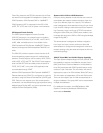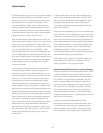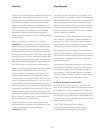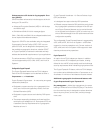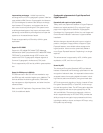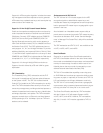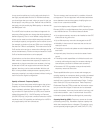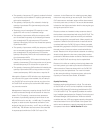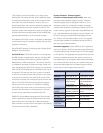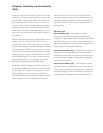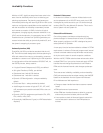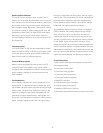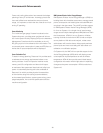It may sound revolutionary, but it’s really quite simple. In
the highly unpredictable world of On Demand business,
you should get what you need, when you need it. And you
should pay for only what you use. Radical? Not to IBM. It’s
the basic principle underlying IBM capacity on demand for
the IBM System z10.
The z10 BC also introduces a architectural approach for
temporary offerings that can change the thinking about on
demand capacity. One or more fl exible confi guration defi -
nitions can be used to solve multiple temporary situations
and multiple capacity confi gurations can be active at once
(for example, activation of just two CBUs out of a defi nition
that has four CBUs is acceptable). This means that On/Off
CoD can be active and up to seven other offerings can be
active simultaneously. Tokens can be purchased for On/Off
CoD so hardware activations can be prepaid.
All activations can be done without having to interact with
IBM—when it is determined that capacity is required, no
passwords or phone connections are necessary. As long
as the total z10 BC can support the maximums that are
defi ned, then they can be made available. With the z10
BC it is now possible to add permanent capacity while a
temporary capacity is currently activated, without having to
return fi rst to the original confi guration.
Capacity on Demand – Temporary Capacity
The set of contract documents which support the various
Capacity on Demand offerings available for z10 BC has
been completely refreshed. While customers with exist-
ing contracts for Capacity Back Up (CBU) and Customer
Initiated Upgrade (CIU) – On/Off Capacity on Demand
(On/Off CoD) may carry those contracts forward to z10 BC
machines, new CoD capability and offerings for z10 BC is
only supported by this new contract set.
The new contract set is structured in a modular, hierarchi-
cal approach. This new approach will eliminate redundant
terms between contract documents, simplifying the con-
tracts for our customers and IBM.
Just-in-time deployment of System z10 BC Capacity on
Demand (CoD) is a radical departure from previous System
z and zSeries servers. This new architecture allows:
• Up to eight temporary records to be installed on the CPC
and active at any given time
• Up to 200 temporary records to be staged on the SE
• Variability in the amount of resources that can be acti-
vated per record
• The ability to control and update records independent of
each other
• Improved query functions to monitor the state of each
record
• The ability to add capabilities to individual records con-
currently, eliminating the need for constant ordering of
new temporary records for different user scenarios
• Permanent LIC-CC upgrades to be performed while
temporary resources are active
These capabilities allow you to access and manage pro-
cessing capacity on a temporary basis, providing increased
fl exibility for on demand environments. The CoD offerings
are built from a common Licensed Internal Code – Confi gu-
ration Code (LIC-CC) record structure. These
Temporary
Entitlement Records (TERs) contain the information neces-
sary to control which type of resource can be accessed
and to what extent, how many times and for how long, and
under what condition – test or real workload. Use of this
information gives the different offerings their personality.
Capacity Back Up (CBU): Temporary access to dormant
processing units (PUs), intended to replace capacity lost
within the enterprise due to a disaster. CP capacity or any
and all specialty engine types (zIIP, zAAP, SAP, IFL, ICF)
On Demand Capabilities
41



